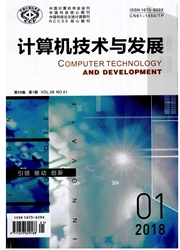

 中文摘要:
中文摘要:
稀疏度自适应匹配追踪(SAMP)算法是压缩感知(CS)中一种主流的图像重构算法。随着迭代次数的增加,SAMP算法的原子候选集将成倍增加,会导致系统空间的浪费和重构时间的增长。为此,提出了一种模糊裁剪阈值稀疏度自适应匹配追踪(FPTSAMP)算法。由于离散小波变换(DWT)在CS稀疏处理过程中破坏了低频逼近系数间的相关性,对信号的重构质量产生了一定的负面影响,因而采用小波高频子带变换(HFSBWT)来替代DWT,实现对信号的稀疏表示。仿真实验结果表明,相比于同一重构算法,采用HFSBWT方法得到的峰值信噪比更好;与SAMP算法相比,与HFSBWT相结合的FPTSAMP算法的重构效果有了明显提高,重构时间也减少了一半。
 英文摘要:
英文摘要:
Sparsity Adaptive Matching Pursuit (SAMP) is a mainstream image reconstruction algorithm in Compressed Sensing (CS). However,with the increase of iterative times,it has multiplied atoms candidate set that lead to wasting storage capacities and lengthening reconstruction time. A method called Fuzzy Pruning Threshold Sparsity Adaptive Matching Pursuit (FPTSAMP) is proposed. The Dis- crete Wavelet Transform (DWT) destroys the correlation among low-frequency approximation coefficients in CS sparsity processing, which results in bad reconstruction quality, so a High Frequency Sub-Band Wavelet Transform (HFSBWT) is adopted instead of DWT to realize the sparse representation of signal. Simulation results show that compared with the same reconstruction algorithms the HFSBWT has achieved a better Peak Signal To Noise Ratio (PSNR) of images and that compared with SAMP algorithm the FPTSAMP combined with HFSBWT has lifted the reconstruction performance of images significantly with its reconstruction time cutting in half.
 同期刊论文项目
同期刊论文项目
 同项目期刊论文
同项目期刊论文
 期刊信息
期刊信息
